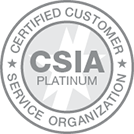
“This article originally appeared on ASAECenter.org. Reprinted with permission. Copyright ASAE: The Center for Association Leadership (June 2016), Washington, DC.”
“Association leaders can be skeptical of environmental scanning, but a few simple tools can make them an effective part of boards' strategic work.”
When you mention environmental scanning or trends monitoring with your association's leaders, what do they do? Squirm in their seats? Change the subject? Give you a blank stare? If any (or all) of these responses sound familiar, you're certainly not alone.
As a 35-year association professional veteran, I have experienced plenty of change in how associations deliver services to their members. Thirty-five years ago, we didn't have computers or laptops; electric typewriters, carbon paper, and rotary phones were the norm. I can remember writing articles for our association newsletters in the 80s about the "information superhighway" and not really believing volunteer leaders would even embrace email.
While strategic planning requires focus, environmental scanning and trends monitoring requires both patience and persistence.
Today, of course, changes arrive much more quickly. How are leaders able to anticipate their association's needs with the rate of technology changes alone? As the champion for "Trends Monitoring" on the ASAE Research Committee, I've argued that it is critical that the volunteers and association colleagues I work with embrace some simple tactics to incorporate trends monitoring into their work. Here are my top five ideas for making that happen:
1. Clarify Expectations
The first message to share with volunteer leaders and staffers is that, while strategic planning requires focus, environmental scanning and trends monitoring requires both patience and persistence. There is no set recipe that will work for everyone. Trends monitoring is a little messy.
2. Build a Trends Wall
It is easy to get lost in the daily to-do list and timeline of activities that must get done, so "monitoring trends" can often feel like just one more thing that you need to do. To make trends monitoring come to life, I created the concept of a trends wall. It's important to create some type of visual to allow staff and volunteer leaders to add ideas or trend information that they were monitoring. Think about a placing a whiteboard in your registration area or flip-chart paper in your board meeting as easy ways to gather trends as you notice them.
3. Capture Existing Trends
Once your radar has been turned on, you will soon begin to notice the trends articles that already pass through your inbox or are sprinkled in industry publications and news outlets. Begin to compile the lists into a single document. Next, start to look for topics that appear on more than one list of trends. You will soon realize that it doesn't take a lot of effort to gather existing trends summaries to get you started.
4. Engage Your Members
As a frequent guest speaker at several ASAE regional societies, I have had the opportunity to introduce the trends topic to my colleagues in the industry.
I used a simple Word document that compiled six different lists of trends that crossed my desk to drive engagement. I shared the trends compilation and asked each individual to reflect on the trends and identify the top three items that they felt would impact the way they served their members, or even the type of services members might offer their customers.
Individuals were then assigned to groups where they shared their individual ideas and gained group consensus based on what others had to share.
5. Help Trends and Strategic Planning Converge
The feedback from the table discussions should then be captured and summarized. This information should then feed into your association's strategic planning discussions. What are members seeing as trends coming in the future that will either create new opportunities for your association or force your association to consider retiring existing programs?
You may not be met with open arms or minds when you suggest any of the trends implementation tactics with your volunteer leaders. But the leaders at the National Association of Professional Organizers, where I'm executive director, were willing to host a nontraditional session format in their recent annual conference educational program.
While the topic of trends monitoring didn't sound anything like the other sessions, members were curious enough to show up and learn more. After a brief presentation to explain the difference between strategic planning and environmental scanning, the NAPO attendees embraced the topic, and a lively discussion ensued. As business owners, the attendees soon realized that the discussions on the relevance of the trends opened their minds to new possible services and even potential clients.
Sue Pine, CAE, is vice president of professional development at AH, executive director of AH client partner, the National Association of Professional Organizers, and AMC National Accounts sales representative for the Philadelphia Convention & Visitors Bureau.




